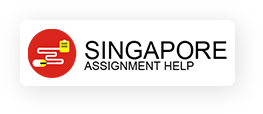| University | Singapore University of Social Science (SUSS) |
| Subject | INDIVIDUAL RESEARCH PROJECT |
Assignment Topic:
THIS ASSIGNMENT REQUIRES STUDENTS TO EXPLAIN THE MAIN TYPES OF MERGERS, AS WELL AS THE BENEFITS OF THIS BUSINESS STRATEGY. STUDENTS ARE ALSO ASKED TO ANALYSE TWO RECENT CASE-STUDIES OF COMPANIES UNDERGOING A MERGER.
Q1. a) Define and discuss 3 types of mergers. (6 marks)
- b) Discuss any 4 benefits to shareholders/owners from a (4 marks)
Q2. Analyse any 2 recent (last 10 years) examples of company mergers. These two examples need to be from 2 different business sectors. For example, merger example 1: between two agribusiness companies; and merger example 2: between two financial services companies, or between 2 mining companies etc
Each example of company mergers is worth 10 marks, ie, 2 x two merger examples = 20 marks.
Students should explain the nature of each firm/industry sector for 4 marks out of 10; and explain any 3 costs and/or benefits from each merger for 6 marks out of 10.
…….see over
General Requirements:
Develop logical and coherent responses to the issues raised above. The opinions or decisions that are presented should be supported by references to appropriate texts, articles, websites and current economics practice. The following lists of deadline and requirements should be adhered to. Failure to do so will result in a lower grade on the project.
SUBMISSION DATE: Sunday 3th March: 11.00pm
ASSESSMENT WEIGHTING: 30%.
WORD-LENGTH: 2,500 words (plus/minus 10%)
Assignment Two: INDIVIDUAL RESEARCH PROJECT (MERGERS)
MARKING GUIDE
Q1. a) Define and discuss 3 types of mergers.
2 marks for each of 3 types of mergers. Students must provide a definition of each type of merger, as well as a brief discussion of what it involves. An example of each type could also be rewarded.
(6marks)
- b) Discuss any 4 benefits to shareholders/owners from a (4 marks)
1 mark for a discussion of each of 4 benefits which may result from a merger.
Question 1 is worth 10 marks/30, so allocate approximately 800 words for Q1.
Q2. Analyse any 2 recent (last 10 years) examples of company mergers. These two examples need to be from 2 different business sectors. For example, merge example 1: between two agribusiness companies; and merger example 2: between two financial services companies, or between 2 mining companies etc
Each example of company mergers is worth 10 marks, ie, 2 x two merger examples = 20 marks for Q2.
4 marks out of 10 for an explanation/discussion of the nature of each firm/industry sector.
6 marks out of 10 for an explanation of any 3 costs and/or benefits resulting from each merger. That is, 2 marks for each of 3 explanations of benefits and/or costs = 6 marks per merger example. Evidence/data in support will be highly rewarded.
Question 2 is worth 20 marks/30, so allocate approximately 1600 words for Q2.
Hire a Professional Essay & Assignment Writer for completing your Academic Assessments
Native Singapore Writers Team
- 100% Plagiarism-Free Essay
- Highest Satisfaction Rate
- Free Revision
- On-Time Delivery
Looking for Plagiarism free Answers for your college/ university Assignments.
- Workplace Risk-Based Assessment 1: Evaluation of Hazards, Accidents, and Safety Compliance
- SRM Reflective Assignment 2: Applying Gibbs Model to Overcome Workplace Report Challenges
- ACLP M1P TAE Written Assignment: Skills Framework & Lesson Plan Design Using Gagne’s and Kolb’s Models
- EGH222 Healthcare Analytics Assignment 2: Predictive Model for Sick Days Based on Employee Demographics and Lifestyle Data
- Sustainability Strategy Assignment: Selected Company Case Study on Addressing Sector Challenges and Driving Behavioural Change Campaigns
- 7WBS2012 Executive Career Development Assignment: Career Pathway & Readiness Post-MBA in Education Management
- CVE2322 Gantry Build Prototype Assignment: Sustainable Civil Engineering Model Using Recyclable Materials
- BMG706 Strategic Quality Change Assignment Report: Enhancing Operational Excellence at any Organization
- CVE2323 Structural Analysis Assignment: Matrix Method & STAAD.Pro Evaluation of Frame Systems
- BMK3015 Major Project Assignment: Customer-Centric Design Solutions Using Research & Project Management

